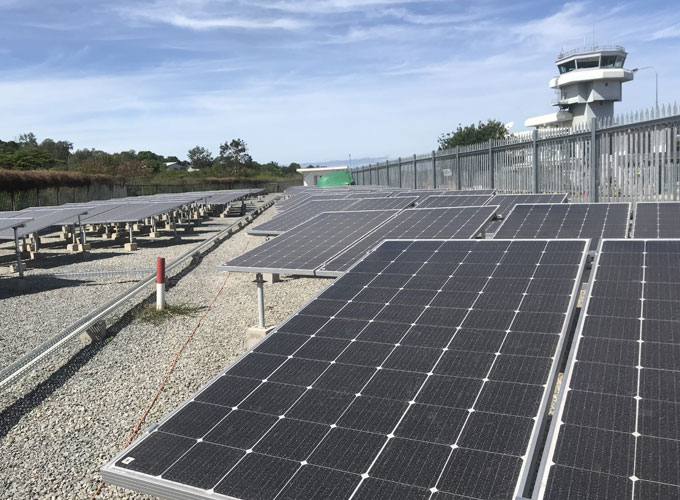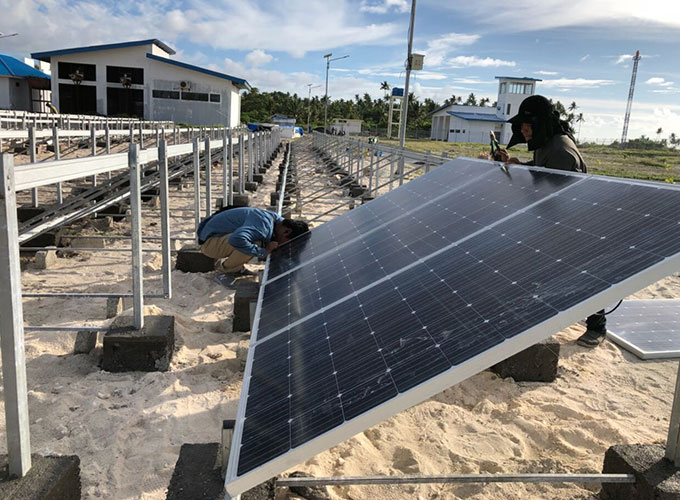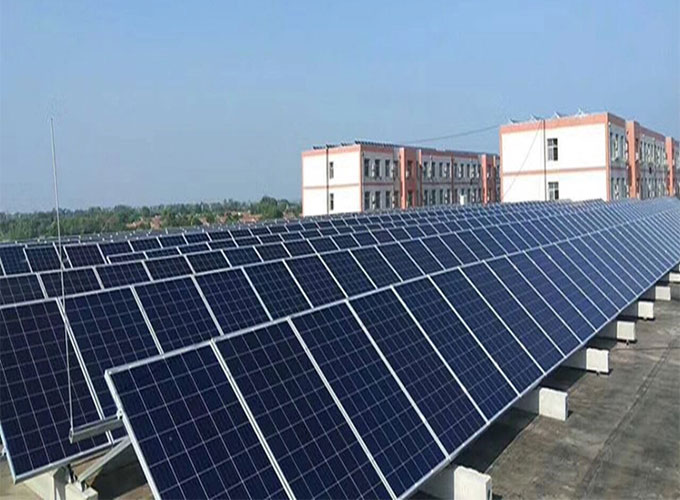Top 10 Solar Project Solution Factory In China
I have seen such a passage, "It’s raining, what washed away, It’s sunny, what bring ?" For those who installed photovoltaic power plants: Rainy days, washed away the income, the sunny day, brought benefits. Then, how can we ensure that solar power station is stable and not affected by the weather?

First of all, from the project design, the solar power station installation orientation should be southward, so that it can fully accept the sun's illumination. The installation angle is theoretically calculated according to the local latitude and longitude, and the arrangement and spacing need to be combined with the local sunshine and the size of the roof structure. If the solar power station is built on a flat land, geographical and geological factors should be considered, such as the orientation of the selected terrain, the degree of slope fluctuation, the hidden danger of geological disasters, the depth of water accumulation, the flood water level, and the drainage conditions. If the solar power station is built on the roof, the parameters such as the roof fixed load, wind load, snow pressure load, and seismic load should be taken into consideration to avoid damage to the solar power station caused by continuous rainy weather.
Second, equipment selection is important. The inverter should be equipped with an inverter with waterproof performance and IP65 protection. Even so, the long-term rain weather has a great impact on the equipment. The soalr power station system is easy to trip in rainy days. There are two common reasons: 1. Wet weather, system leakage increases protection; 2. Rainy days, insufficient sunshine, power protection.

Therefore, in order to protect the solar power generation revenue, it is necessary to observe whether the inverter trips after the rain, check whether the connection between the inverter and other equipment is firm or not; whether the ground connection of the inverter is firm or not; check the circuit inside the inverter whether there are no solder joints or component damage on the components on the board or not.
The life gate of the component is occlusion and rainy days. The long time raining , poor lighting conditions, so the soalr power generation will not come up. What is the income? After the rainy weather, check whether the connection between the PV modules is firm or not; whether the wiring in the square wire box is firm or not; whether the components are damaged or abnormal, such as damage, grid disappearance, hot spots, etc.

Photovoltaic brackets are exposed to the air every day, and they are exposed to the sun and rain. How can the stent be rust-free for 10 years, the steelity is not reduced in 20 years, and it still has certain structural stability in 25 years? This has special requirements for the material of the bracket. The material of the solar power station bracket is made of hot-dip galvanized steel, which completely relieves the worries.
